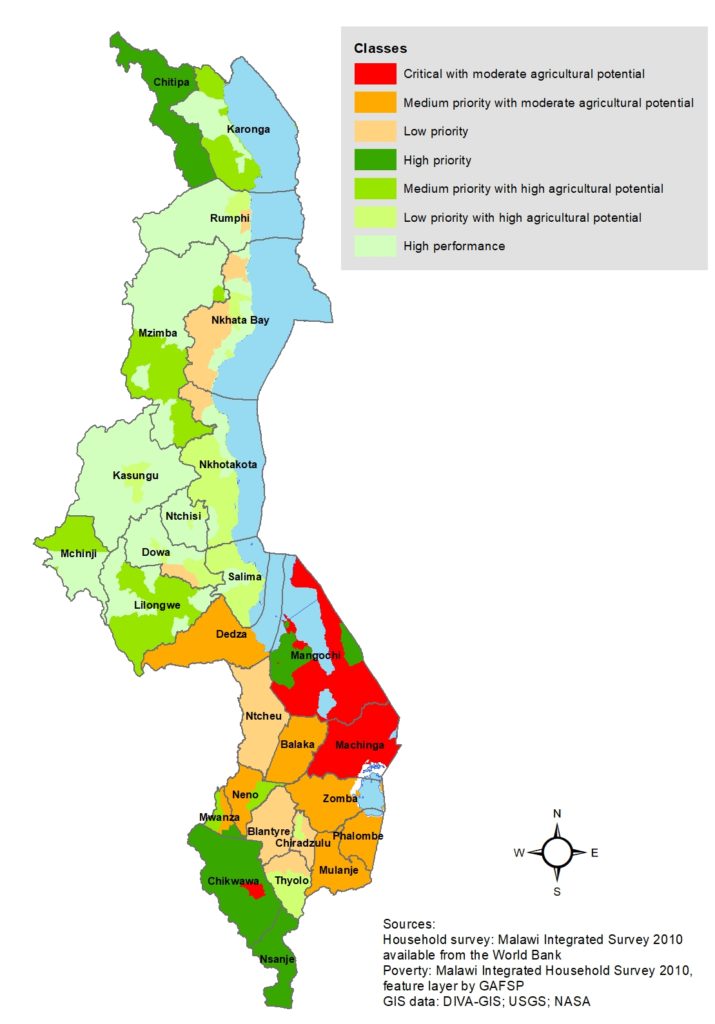Malawi is a landlocked southern African country with a population of more than 18 million people. Malawi’s agricultural sector contributes 37% to the GDP and 85% to export revenues. The sector is characterized by two partial structures: on the one hand, there are about two million small farmer operations which generate about 80% of Malawi’s food production, and on the other hand, the large tobacco, sugar and tea plantations generate over 80% of the agricultural exports. Some of the key supply chains include maize, tobacco, sugar, soybeans, peanut, cassava, tea, potatoes and sunflower. The production of tobacco has decreased dramatically due to the reduced demand. Thus, the national export strategy has seen a shift to diversify revenues through other cash crops (e.g. chickpeas) and value-adding activities (e.g. processing). The national diet is heavily reliant on maize predominantly, and potato and cassava to a lesser extent. Child stunting, which affects 40% of children, represents a significant challenge in Malawi. Meanwhile, obesity and overweight rates have almost doubled in women of reproductive age. This points to a nation-wide micronutrient deficiency.
Read the full country dossier here, see our Malawi farmer innovation contest page here, and read the country innovation study on the status of agricultural innovations, innovation platforms and innovation investments in Malawi here.
Agricultural Typology of Malawi:

